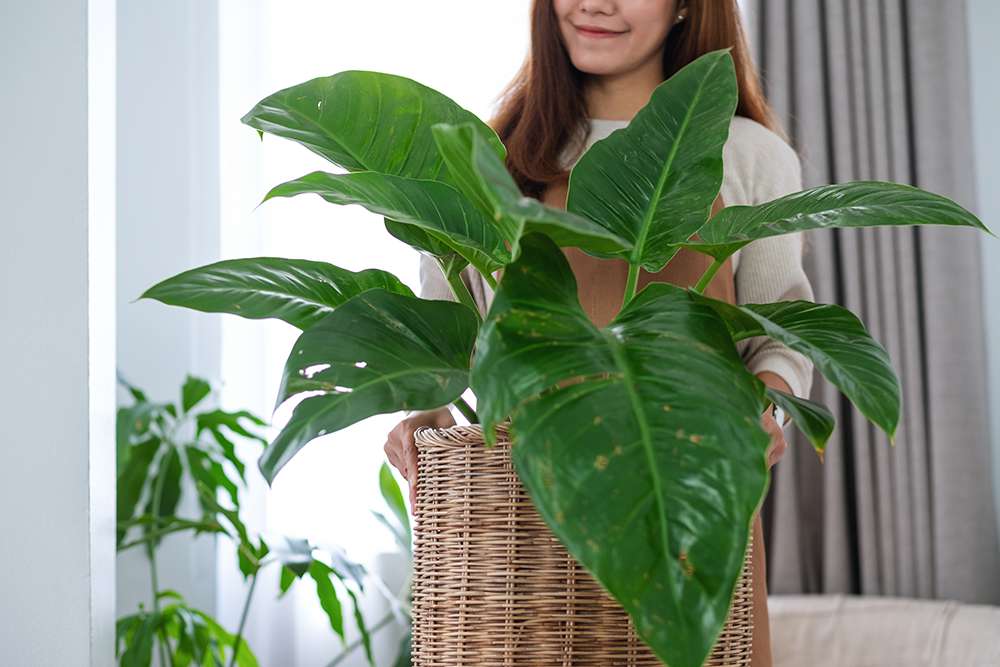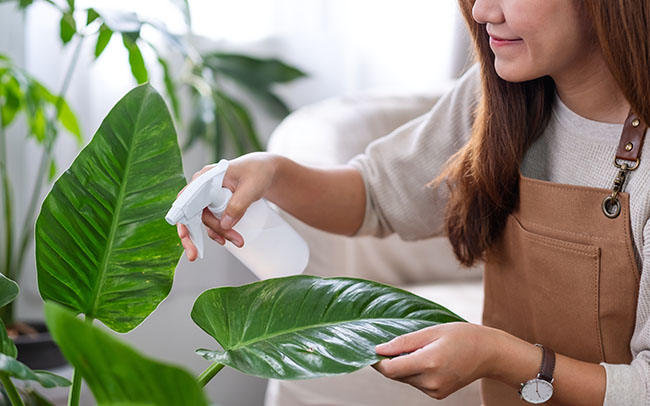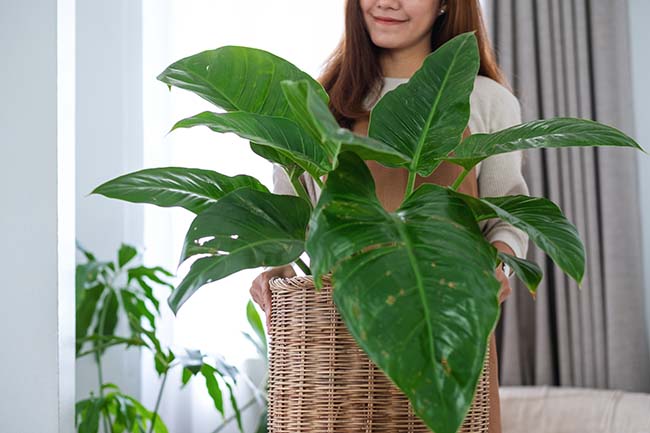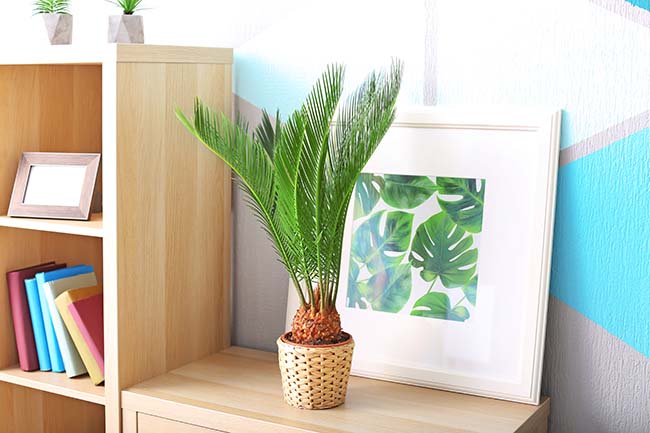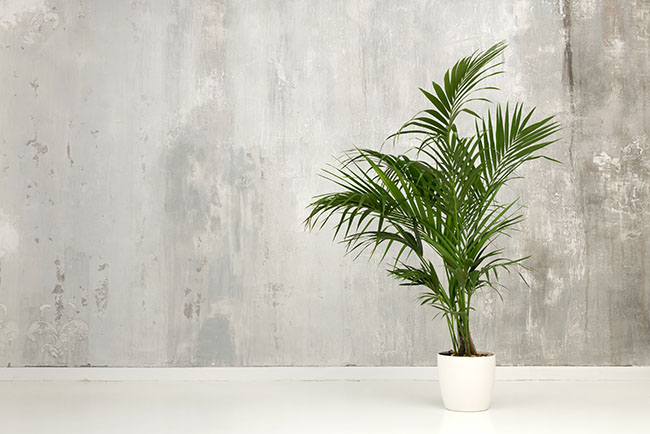Types of indoor palm plants
Indoor palm plants are the perfect choice for your home if you want to bring the breath of the tropics into your space. Most indoor palm plants have thin, pointed leaves on each stem, forming arches. Growing palm trees indoors can improve the aesthetics of any room in your space – residential or commercial. Although they have specific care requirements, growing them indoors in attractive pots is relatively simple.
The most popular indoor palm plants are majestic palms, salon palms, areca palms, cat palms, and kentia palms. People love these well-known indoor palm plants because they don’t take up much space and look magnificent. Common types of palm trees beautify any corner or living space with elegant leaves and an exotic look.
Page Contents
How to take care of indoor palm plants?
Place the palm plant in a bright place, so the sunlight does not directly shine on the plant. The plant’s container must have good drainage so that excess moisture does not accumulate and damage the root system.
House palms thrive when the soil is moist – never too wet but never too dry. Water the indoor plant when the upper part of the soil surface is dry. Add fertilizer occasionally, and maintain a high level of humidity in the room and a constant room temperature.
Brown leaves are the most common indoor palm plant care problem. To avoid the tips of the leaves turning brown due to drought, do not over-fertilize the plant, keep the soil moist and increase the humidity in the room. It would simulate the natural conditions in which these plants grow and develop. Some experts advise trimming the dried tips of palm leaves; however, it can cause dieback of the entire leaf surface. Therefore, you should remove the whole leaf – if it has dried or changed color.
Baby palm tree
When you decide to purchase indoor pal plants, make an effort to buy seedlings from authorized nurseries that deal with this business professionally. Not only will you be able to buy the highest quality seedlings in such places, but you will also receive all the necessary advice on care, species selection, and other essential information.
Do not forget one crucial thing: not all indoor palm plants are suitable for cultivation in all climatic and geographical conditions. So take into account what can be maintained and grown in your space.
Bamboo palm indoor
The bamboo palm is a beautiful indoor plant. Minimal effort is required for successful cultivation. The plant likes a bright place with no direct sunlight and doesn’t like to be moved from one place to another. It is not a demanding plant and is watered when the soil is 2/3 dry.
The height of the plant is about 30 cm, so it fits into literally any space, making it fresh, exciting, and extremely pleasant. You can combine these plants in several pots and specimens to create a mini garden in your apartment or business space.
Pygmy date palm indoor
Pygmy palm, or pygmy date as it is also called, is a dwarf palm of the subtropical region, but it is small enough to be grown in a pot. That allows residents of colder areas to enjoy all its charms, as it is quickly grown indoors (and warm).
The delicate texture of the leaves and the idyllic shape have made it one of the most popular palm varieties. Although they can grow up to 7 or 8 meters in ideal conditions, pygmy dates (palms) usually reach heights in the 3 to 4-foot range. Their height is even smaller if you grow them in a houseplant pot, and let’s say, quite adequate for growing indoors.
Best indoor palm
Lucky palm, hill palm, or salon palm has been used as one of the favorite indoor plants for decades. This lovely plant with deep green leaves was first discovered in Central America, from where it spread worldwide.
Salon palm grows in attractive groupings with lightly textured leaves covered by thin and thick texture. It is also one of the easiest palms to grow indoors and requires virtually no maintenance.
Sometimes it is possible to find specimens with a single stem, but most often, palms are grown in small groups. Hence, they resemble palm-like bushes in attractive pots. The leaves are popular in floral arrangements, decorations, and wreaths because they can survive up to 40 days after being cut from the plant. The mountain palm grows slowly and can take years to reach its full height (60 to 180 cm indoors and 180 cm to 5 meters outdoors).
Ponytail palm indoor
Due to the size and shape of the tree next to the ground, this palm tree received the nicknames elephant’s leg and ponytail palm (due to the shape and position of the leaves). It originates from Mexico, and the aesthetics and compact dimensions have made this palm extremely popular in home gardens and rooms.
Several plants are often combined to create a natural little sedum garden. Still, the most exciting detail about this plant is that it does not belong to the palm family! The age of this plant is very long, and currently, the oldest specimen is growing in Mexico. It is estimated to be 350 years old.
Majesty palm
The majestic palm usually grows up to 3 or 4 meters, while it can reach 15 meters in nature. Plants in pots suitable for home use are far more compact and captivate with a luxurious crown and beautiful leaves. However, they should be kept in rooms of greater height or on the staircase, where they show all their splendor.
Sago palm indoor
That is a favorite palm tree for interior decoration. The sago palm is suitable for planting in planters and looks very effective planted in tall pots in a representative place. This particular type gives a luxurious touch to any space. It is characterized by slow growth and longevity.
During leafing, the pot with the cycad palm should be rotated a quarter of a circle daily so that all new leaves receive the same amount of light. The pot should be turned until the leaves are completely hardened.
The optimum temperature at which the cycad palm grows is 7 to 18 degrees. In summer, the older plant can be taken outside. In winter, it does not tolerate prolonged exposure to sub-zero temperatures. Still, it can tolerate frost if it is kept dry. The ideal temperature in winter is 12 to 15 degrees.
Areca palm care indoor
The areca palm tree is one of the palm trees most often used to decorate bright interiors. This elegant plant has feathery, arching leaves, each with up to 100 tiny leaflets. Due to its original appearance, this tropical plant attracts extraordinary attention.
House area is expensive, so they are usually bought as small table plants. It grows 15 to 25 cm annually until it reaches a height of 1.8 to 2.1 m. The areca palm is one of the few palms that can tolerate pruning without severe damage, allowing mature plants to be kept indoors for their entire life span of up to 10 years.
Indoor kentia palm
The origin of this type of palm tree in Australia. Known as the Kentia palm, straw palm, or patio palm, that species is an exceptional decoration for any hallway, foyer, and living room. It was worth it because of the beautiful hanging leaves. This palm has a lush upright growth with minimal care requirements, making it one of the species experts will most often recommend for indoor growing.
Chinese fan palm indoor
A plant originating from subtropical Asia, it enchants the leaves’ elegance, shape, and size. Southern Japan is where this palm originated, and from there, it spread across the planet.
In a natural environment, it can grow between 9 and 15 meters and is suitable for growing in gardens. Still, if planted in a pot, the dimensions are much smaller and ideal for growing indoors.
Narrow and long leaves bent towards the ground make this palm a beautiful plant.

